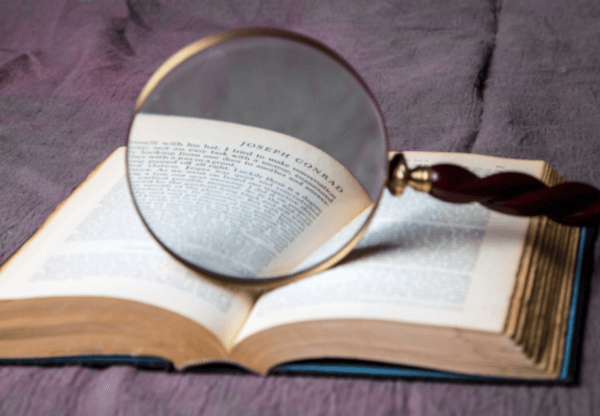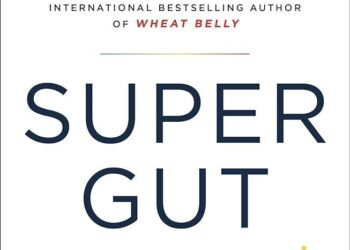Table of Contents
ToggleIntroduction
The Art Of Close Reading Tips For Students In 2024, when the demands of interpreting literature and other texts have gotten more complex than ever before, close reading is an essential ability that every student should learn. Fundamentally, close reading is an analytical technique that invites readers to consider a text’s subtleties by focusing on its language, structure, and meaning.
Close reading allows you to find deeper meanings and develop a more thorough comprehension of the content, whether you’re analyzing a novel, poem, essay, or any other type of literature.
The capacity to interact profoundly with a text is more important than ever in a time where information is absorbed rapidly and frequently in a shallow manner. In addition to enhancing comprehension and critical thinking abilities, close reading develops the capacity for in-depth debate and analytical writing.
An extensive examination of close reading will be given in this article, along with helpful hints, examples, and tactics for students looking to improve their close reading abilities in 2024.
1. What is Close Reading?
The technique of carefully and methodically examining a text to uncover its underlying meaning is known as close reading. Close reading necessitates reading carefully and deliberately while paying attention to each word, sentence, and structure in the text, as opposed to surface-level reading, which entails skimming or reading rapidly for basic comprehension. The objective is to reveal the nuances of the language, the structure of the text, and the author’s goals when developing the argument or story.
The close reading method encourages students to read not only for the plot or main ideas but to engage with the text’s language, style, tone, word choice, symbolism, and overall structure. By doing so, close readers can uncover layers of meaning that would otherwise be missed in a casual reading.

2. Key Components of Close Reading
In order to effectively practice close reading, it’s essential to focus on several critical components that work together to give you a complete understanding of the text. These include:
2.1 Vocabulary and Word Choice
Words are the building blocks of any text, and an author’s choice of words can drastically alter the tone and meaning. Close readers pay attention to specific words, their connotations, and how they relate to the broader themes of the text.
- Example: In a poem about love, the use of “adore” instead of “like” may imply a deeper, more intense feeling. Understanding the impact of such word choices can help you interpret the text’s emotional weight.
2.2 Tone and Mood
The tone refers to the author’s attitude toward the subject matter, while the mood is the emotional atmosphere created by the text. Both of these elements play a critical role in understanding the author’s perspective and how they want the reader to feel.
- Example: A novel that discusses grief in a melancholy tone will create a different reading experience than a story about grief written in an ironic or detached tone.
2.3 Imagery and Descriptive Language
Imagery involves the use of sensory details to help the reader visualize scenes or feel emotions. Close readers analyze how the author uses descriptive language to appeal to the senses, bringing the text to life and enhancing its emotional resonance.
- Example: A passage that describes “the crisp, cold air and the sound of crunching snow beneath boots” creates a vivid image that not only places the reader in the scene but also sets a tone of winter solitude or introspection.
2.4 Sentence Structure and Pacing
The way a sentence is constructed can greatly impact the flow of a story. Look for sentence length, punctuation, and how the author’s sentence structure influences the pacing of the text. Short, abrupt sentences often increase tension, while longer, flowing sentences may create a more reflective or peaceful tone.
- Example: A series of short, punchy sentences in a battle scene creates urgency, whereas a long, descriptive sentence in a romantic scene might enhance the mood of tranquility and love.
2.5 Symbolism and Motifs
Symbols are objects, characters, or actions that represent larger ideas or themes. A motif is a recurring element or theme throughout a text. Both symbolism and motifs are essential in close reading because they deepen the meaning and connect different parts of the text.
- Example: In The Great Gatsby, the green light is a symbol of Gatsby’s unattainable dreams and desires. By paying attention to such symbols, readers gain insight into the deeper themes of the story.
2.6 Theme and Message
The theme is the central idea or underlying message of a text. Close readers must identify the main themes and explore how they are developed throughout the work. Authors often reveal their themes through characterization, plot development, and various literary devices.
- Example: In a novel about poverty, a recurring theme might be social inequality, which can be explored through the struggles of the protagonist and the depiction of societal structures.
3. The Steps to Effective Close Reading
To effectively perform close reading, follow these steps that guide you through the process:
3.1 Read the Text Multiple Times
One of the key principles of close reading is reading the text more than once. Your first reading should be for basic comprehension, but subsequent readings should focus on analysis. Each reading will uncover new layers of meaning and allow you to notice details you may have missed initially.
3.2 Annotate the Text
As you read, take notes in the margins, underline important passages, or make symbols that represent certain literary devices or themes. This will help you organize your thoughts and easily refer back to critical moments in the text later on. Use symbols like “*” for important ideas or “?” for parts that you find confusing.
3.3 Ask Questions
While reading, ask yourself questions that will deepen your analysis. Consider the following types of questions:
- What is the significance of this word or phrase?
- How does this sentence affect the tone or pacing?
- What themes are emerging?
- How does the author use symbolism or imagery to enhance the meaning?
- What does the structure of the text reveal about its message?
Asking such questions encourages deeper thinking and allows you to engage critically with the material.
3.4 Look for Patterns
Pay attention to recurring motifs, symbols, or phrases. These often point to a central theme or idea in the work. Tracking these patterns can help you better understand the overall purpose of the text.
3.5 Contextualize the Text
Understanding the context in which a work was written is crucial for a full analysis. Consider the author’s background, the time period, and the cultural or historical influences that might have shaped the text. This will help you better understand the author’s intent and the text’s significance.
4. Practical Tips for Close Reading in 2024
In 2024, with the rise of digital media and fast-paced reading habits, students are increasingly distracted by outside influences. Close reading requires patience and focus, so here are some practical tips to help you stay on track:
4.1 Limit Distractions
To perform close reading effectively, find a quiet, distraction-free environment. If you’re reading digitally, consider using apps that allow you to highlight text or take notes without being distracted by social media notifications.
4.2 Use Technology Wisely
Many digital tools can assist with close reading. Apps like Kindle or Audible allow for note-taking and highlighting, and websites like SparkNotes or CliffsNotes offer summaries and analyses that can help you understand difficult texts. However, always make sure to read the text yourself before relying on secondary resources.
4.3 Take Breaks
Close reading can be mentally taxing. Don’t be afraid to take breaks between readings to process your thoughts and come back to the text with fresh eyes. This will help you retain more information and maintain focus.
4.4 Discuss the Text
Engaging in discussions with others can deepen your understanding of the text. Book clubs, study groups, or online forums allow you to exchange ideas, hear different perspectives, and further explore the text’s meanings.
5. The Benefits of Close Reading
Close reading is not only a useful skill for academic success but also for personal growth. Here are some key benefits of close reading:
5.1 Improved Critical Thinking
By analyzing the finer details of a text, you hone your ability to think critically. Close reading forces you to look beyond the surface and engage with texts on a deeper level, allowing you to form more complex ideas and arguments.
5.2 Enhanced Comprehension
The more you practice close reading, the better you will understand texts. Paying attention to small details and uncovering hidden meanings will improve your overall reading comprehension, making you a more skilled reader.
5.3 Better Writing Skills
Close reading improves your ability to write persuasively and analytically. By closely examining how authors construct their arguments and develop their ideas, you can apply similar techniques in your own writing.
Conclusion
For pupils, becoming proficient in close reading will be crucial in 2024 and beyond. It strengthens your writing and critical thinking abilities, increases understanding, and allows you to interact with books more deeply. Close reading gives you the opportunity to fully understand any material, whether you are reading for pleasure, writing a paper, or getting ready for an exam.
You will be well on your way to developing into a more skilled and considerate reader who can recognize the depth and complexity of the written word if you adhere to the advice and techniques provided in this guide.
Read More
FAQ
1. How do I start practicing close reading?
Start by reading a short passage carefully, annotating as you go. Look for key themes, motifs, and literary devices. Afterward, reflect on the deeper meanings behind the words and how they contribute to the text’s overall purpose.
2. Is close reading only for literature?
No, close reading can be applied to any form of text, including non-fiction, speeches, essays, and even advertisements. It’s a valuable skill for analyzing and interpreting all types of written material.
3. How many times should I read a text for close reading?
It’s recommended to read a text multiple times. The first reading is for understanding the plot or main ideas, and subsequent readings should focus on analyzing specific literary devices, language choices, and themes.
4. What if I don’t understand a text after close reading?
If you’re still unsure, seek out resources such as study guides, discussions, or expert analyses. Sometimes additional context or different perspectives can help clarify the text.
5. Can close reading help with exam preparation?
Yes! Close reading is an excellent technique for exam preparation, especially for subjects that involve literary analysis. By practicing close reading, you develop the ability to write detailed, thoughtful responses to exam questions.
















